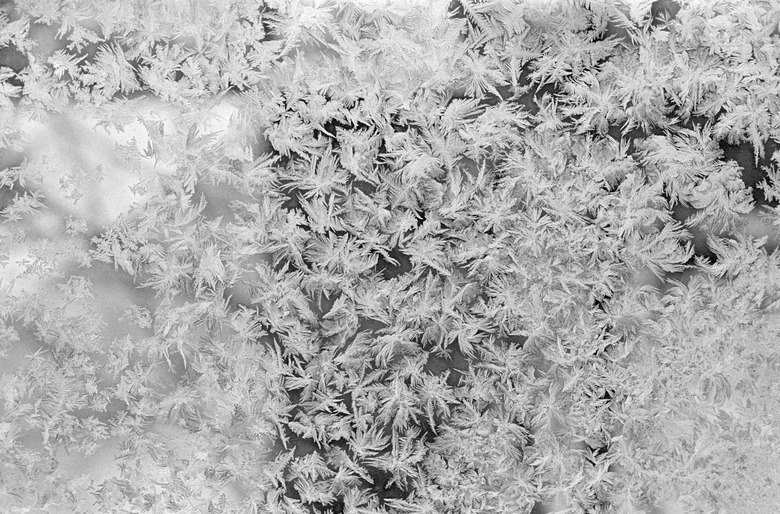List Five Kinds Of Snow Crystals
Some may use the expressions "snowflakes" and "snow crystals" interchangeably, but they are actually different things. Snowflakes are clusters of snow crystals. Though a single snow crystal may be called a snowflake, usually a snowflake is made up of multiple snow crystals. People who classify snow crystals divide them into 41 types. Below are five of them.
Simple Prisms
Simple Prisms
A simple prism is a hexagonal (six-sided) snow crystal. These flat snow crystals look like small slivers of a pencil, though they can have ridges and other features. Simple prisms are the smallest of the snow crystal shapes and cannot be seen by the naked eye. They are also the first stage of a snow crystal's growth. While some snowflakes keep this shape, others will grow branches and facets and take on other shapes.
Stellar Plates
Stellar Plates
Stellar plates are flat snow crystals that have six arms stretching out from a hexagonal center. Snow crystals' shapes are partly determined by temperature; these crystals form when the temperature is between 5 and 10 degrees Fahrenheit.
Needles
Needles
Needles are an interesting type of snow crystal. These are, as their name implies, small, thin crystals that resemble needles. They start as flat, long crystals, but as the temperature gets colder, they become three-dimensional needle crystals.
Stellared Dendrites
Stellared Dendrites
Stellared Dendrites get their name from the word "dendritic", which means tree-like. These snow crystals are what you probably picture when you think of a snowflake. Stellared Dentrite snow crystals have branches stretching from the center, and the six branches can also have branches. These crystals are between two to four millimeters in size, and can be seen with a magnifying glass.
Fernlike Stellar Dendrites
Fernlike Stellar Dendrites
Fernlike Stellar Dendrites have six branches that look like the branches of a fern plant. If you have ever experienced powder snow while skiing, you have experienced fernlike stellar dendrites. These snow crystals can also be seen with a magnifying glass, as they are usually around five millimeters in length.
Cite This Article
MLA
Duncan, Lisa. "List Five Kinds Of Snow Crystals" sciencing.com, https://www.sciencing.com/list-five-kinds-snow-crystals-5785958/. 24 April 2017.
APA
Duncan, Lisa. (2017, April 24). List Five Kinds Of Snow Crystals. sciencing.com. Retrieved from https://www.sciencing.com/list-five-kinds-snow-crystals-5785958/
Chicago
Duncan, Lisa. List Five Kinds Of Snow Crystals last modified March 24, 2022. https://www.sciencing.com/list-five-kinds-snow-crystals-5785958/
